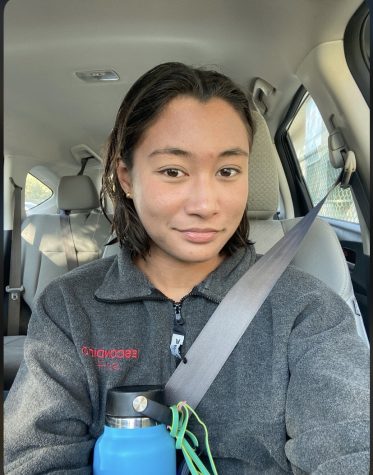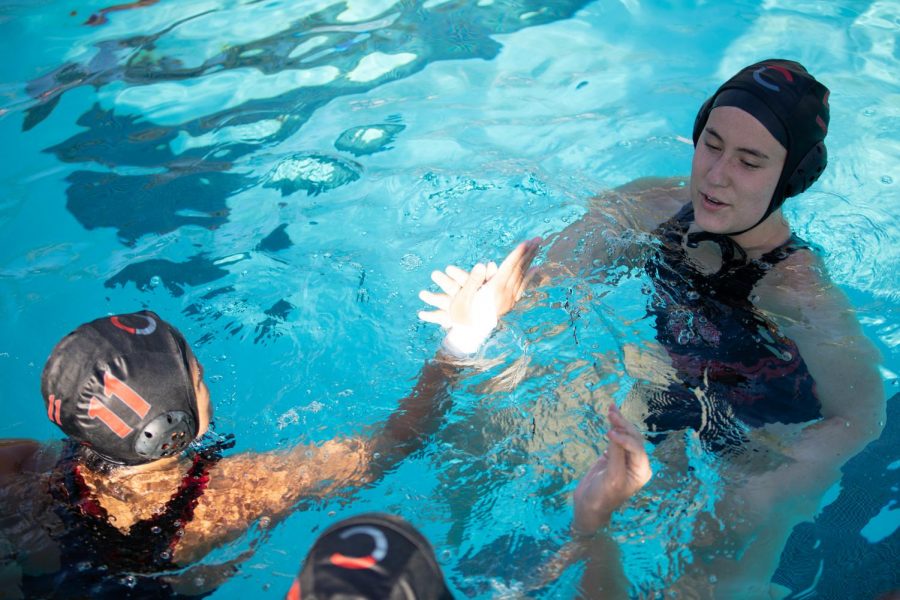The lack of diversity in aquatics is dangerous
The first time I learned to swim, I was four. I was safe. I was lucky. I glided, not quite effortlessly through the water, but oblivious to anything other than its cool touch. I’ve been in and out of pools my whole life, but it took me a minute to notice how much my two favorite sports, swimming and water polo, lack racial diversity.
Over the years, there were times at travel meets and away tournaments when I was one of the only brown people in the pool. But at home, that wasn’t as often the case. For the most part, I grew up in a diverse place, especially compared to other parts of the country and the state. In many ways, I was shielded from the lack of diversity in my sports. I always had teammates from a variety of backgrounds; racially and ethnically diverse faces bobbed in the water next to me. My mostly positive experiences shaped my empathetic view of the world and allowed me to see some of my values and parts of my identity in my sports. I was also lucky to have access to swimming pools and lessons from a young age. Not everyone can say the same, which is unacceptable.
Diversity and the opportunity to be water safe are directly connected. The lack of diversity in aquatics enforces a system where not everyone has the same access to learning to swim. Yes, swimming may be just another recreational activity. It may be something you do on the weekends or during summer when it’s hot. But knowing how to swim can also save your life.
According to the Centers for Disease Control and Prevention (CDC), more than 3,500 people drown each year in the U.S., and drowning is the leading cause of death in children 1-4 years old. That’s not the shocking part. Minorities drown at a rate three times higher than their peers (YMCA).
The reasons behind why go deeper than you might think.
It’s no secret that swimming is a luxury that has long excluded Black people and lower socioeconomic classes. In the late 19th and early 20th century, swimming pools in the U.S. weren’t built in African American neighborhoods. When they were, the majority of pools were racially segregated. Officially segregated pools had city officials or police officers stop Black swimmers from entering, but even desegregated pools were unsafe and were unofficially segregated with violence. White swimmers dunked and punched Black swimmers in the water. They accosted Black swimmers at pool entrances and beat them up, sometimes with clubs. White swimmers even kicked Black swimmers on the ground just for trying to swim.
It doesn’t take much to imagine the degree of trauma and eventual intergenerational trauma caused by these egregious acts. Black swimmers had to choose between their immediate safety and learning how to swim, a necessary life skill. This forced choice kept Black swimmers and their families away from pools and had effects that lasted for generations.
Furthermore, a person’s likelihood of learning to swim is highly dependent on their parents’ ability to swim. According to a study conducted by the USA Swimming Foundation and the University of Memphis, if a child’s parents don’t know how to swim, the child only has a 13 percent chance of learning. This cycle explains why even though swimming is the most popular recreational activity for children aged 7-17 in the U.S., 79 percent of children in low-income families have little to no swimming ability, according to the same study. With swimming ability dependent on the generation before, it becomes a cycle seemingly impossible to break.
In less diverse spaces, knowing that I’m a brown swimmer, water polo player, a person in the pool, I can’t help but feel a little proud. I am bringing change to my sports just by playing them. But I also know that change doesn’t start and end with just me. I am only a small part of something much bigger.
Diversity brings a broader range of perspectives to the table. It makes space for new ideas, different experiences, and opinions to be at the forefront of the conversation. So I ask, does diversity not improve the sports we play? Does it not better each and every person in the places it exists? Increasing diversity in aquatics cannot be about a bow on top of an organization’s resume. It has to be about knocking down the walls built in the past meant to divide and inviting in new perspectives that bring us together. It won’t come without hard work both in our communities and on ourselves, examining our privilege, but it must be done. Because as long as aquatics lacks diversity, we are standing idly by as the atrocities of the past continue to take a toll on today’s world.

Serafina Cortez '23 is the Editor of Opinions for Counterpoint. When she's not writing, you can find her reading, playing water polo, or Duolingo-ing.


